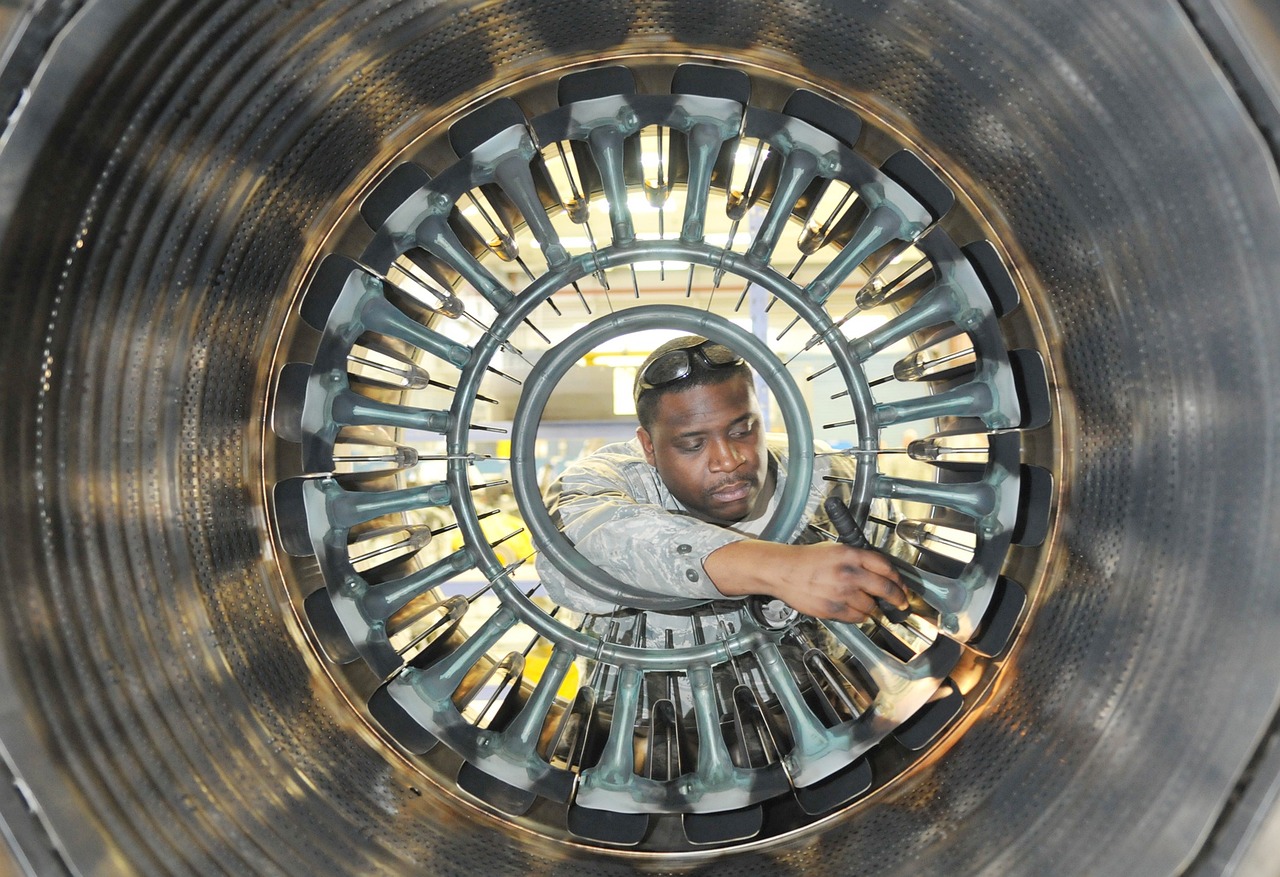In order to achieve the highest level of precision and accuracy in your work, it is crucial to properly calibrate your electric die grinders. By fine-tuning and aligning the various components of these powerful tools, you can ensure that they perform at their optimal level, resulting in more precise and accurate grinding. In this article, we will explore the importance of calibration and provide you with practical tips on how to calibrate your electric die grinders effectively, ultimately enhancing your overall work quality. So, let’s dive into the world of precision and accuracy and discover how calibration can take your grinding to the next level!

Understanding Electric Die Grinders
Electric die grinders are versatile power tools used for grinding, sanding, and shaping various materials. They operate by rotating a small abrasive wheel or bit at high speeds, allowing for precise and controlled material removal. These tools are commonly used in industries such as metalworking, automotive, and woodworking, where precision and accuracy are paramount.
Types of Electric Die Grinders
There are two main types of electric die grinders: straight die grinders and right-angle die grinders. Straight die grinders have a straight design, with the grinding bit aligned with the tool’s body. They are ideal for applications that require access to tight spaces and intricate details. On the other hand, right-angle die grinders have a 90-degree angled head, allowing for increased maneuverability in confined areas. The choice between these two types depends on the specific requirements of the job at hand.
Importance of Precision and Accuracy in Die Grinding
In die grinding operations, precision and accuracy play a vital role in achieving the desired outcome. Whether it’s grinding, shaping, or deburring, even the slightest miscalibration can result in significant errors and rework. Proper calibration of electric die grinders ensures that the tools are operating at their optimal performance, enabling precise material removal and maintaining consistent measurements.
Calibration of Electric Die Grinders
Calibration refers to the process of adjusting and aligning the components of a tool to ensure accurate and reliable performance. In the case of electric die grinders, calibration involves checking and adjusting various parameters, such as speed, torque, and vibration levels. The purpose of calibration is to bring the tool’s readings and outputs in line with known standards, ensuring precision and accuracy.
Significance in Achieving Precision and Accuracy
Calibration is crucial for achieving precision and accuracy in die grinding. When an electric die grinder is properly calibrated, it operates within specified tolerances, resulting in consistent and reliable performance. Without calibration, the readings and outputs of the tool may deviate from the desired values, leading to errors, inconsistent measurements, and improper material removal.
Frequency of Calibration
The frequency of calibrating electric die grinders depends on several factors, including the tool’s usage, operating conditions, and manufacturer’s recommendations. Generally, it is advisable to calibrate the tools regularly, preferably at least once a year, or more frequently in high-demand production environments. Additionally, calibration should be performed whenever there are signs of deviation from expected performance or when the tool undergoes repairs or modifications.

Steps for Proper Calibration
Proper calibration of electric die grinders involves several key steps. Firstly, the tool should be thoroughly cleaned and inspected for any damage or wear. Next, the calibration tools should be selected based on the specific requirements of the grinder and the measurements to be calibrated. The calibration process typically involves adjusting parameters such as speed, torque, and vibration levels using the appropriate tools and techniques. Finally, the calibrated tool should be tested against known standards to ensure its accuracy and reliability.
Choosing the Right Calibration Tools
When it comes to calibrating electric die grinders, choosing the right calibration tools is essential. These tools, such as torque wrenches, tachometers, and vibration analyzers, help ensure accurate and precise calibration. When selecting calibration tools, factors to consider include the specific parameters to be calibrated, the accuracy and range of the tools, and compatibility with the electric die grinder being calibrated. Investing in high-quality calibration tools is crucial for achieving reliable and consistent results.
Recommended Calibration Tools
For calibrating electric die grinders, some commonly used calibration tools include:
- Torque wrench: Used to calibrate the torque output of the grinder, ensuring proper tightening of grinding bits and accessories.
- Tachometer: Measures the rotational speed of the grinder’s motor, allowing for accurate control of grinding speed.
- Vibration analyzer: Helps assess and adjust the grinder’s vibration levels, minimizing excessive vibrations that can impact precision and accuracy.
- Dial indicators: Used to measure and align the runout of the grinding wheel or bit, ensuring it spins true and without wobbling.

Importance of High-Quality Calibration Tools
High-quality calibration tools are crucial for accurate and reliable calibration of electric die grinders. These tools are designed and manufactured to stringent standards, ensuring their accuracy and durability. By using high-quality calibration tools, you can have confidence in the calibration process, knowing that the readings and adjustments made are precise and trustworthy. Investing in reliable calibration tools is a wise choice for achieving optimal performance and prolonging the lifespan of your electric die grinders.
Impact of Improper Calibration on Precision and Accuracy
Improper calibration of electric die grinders can have significant negative impacts on precision and accuracy. Here are some key consequences to be aware of:
Effect on Grinding Performance
When an electric die grinder is inaccurately calibrated, its performance in grinding, shaping, and deburring materials is compromised. The lack of precision can result in uneven grinding surfaces, incorrect angles, and improper removal of material, affecting the overall quality of the workpiece.
Risk of Inaccurate Measurements
A miscalibrated electric die grinder can lead to inaccurate measurements. This is especially crucial in applications where precise measurements are required for fit, tolerances, or alignment. Inaccurate measurements can result in parts that do not fit properly, leading to assembly issues or functional problems further down the line.
Consequences of Asymmetric Calibration
Asymmetric calibration, where adjustments are made unevenly or inconsistently, can have adverse effects on the overall performance of an electric die grinder. It can cause deviations in speed, torque, or vibration levels, resulting in inconsistent material removal, poor surface finishes, and reduced tool life. Asymmetric calibration can also lead to increased wear and tear on the grinder and its accessories.
Benefits of Proper Calibration
Proper calibration of electric die grinders brings several benefits, including:
Achieving Optimal Precision and Accuracy
By ensuring that your electric die grinders are properly calibrated, you can achieve optimal precision and accuracy in your grinding operations. This translates to superior quality workpieces, reduced errors, and improved customer satisfaction.
Increase in Efficiency and Productivity
Properly calibrated electric die grinders operate at their peak performance, allowing for faster and more efficient material removal. With accurate measurements and precise control, tasks can be completed more quickly, resulting in increased productivity and shorter lead times.
Improved Tool Lifespan
Calibration plays a crucial role in maintaining the longevity of electric die grinders. When tools are properly calibrated, excessive wear and tear can be prevented, leading to increased tool lifespan and reduced replacement costs. Calibration helps ensure that the grinder operates within its designed parameters, avoiding unnecessary strain on its components.
Reduction in Errors and Rework
Proper calibration minimizes the occurrence of errors and rework. By maintaining accurate and consistent measurements, the need for reworking or scrapping workpieces due to incorrect dimensions or finishes is significantly reduced. This leads to saved time, resources, and costs for your projects.
Common Calibration Issues and Solutions
While proper calibration is crucial, it is not immune to potential issues. Here are some common calibration issues and their solutions:
Uneven Grinding
If you observe uneven grinding surfaces, it may indicate a calibration issue. To address this, recalibrate the grinder and ensure that the grinding wheel or bit is aligned properly. Verify that the workpiece is stable during grinding and that any jigs or fixtures used are correctly positioned.
Tool Vibration
Excessive tool vibration can impact the precision of grinding. Check the calibration of the grinder’s vibration levels. If vibrations are high, recalibrate or adjust the grinder to reduce the vibration levels. Additionally, inspect the grinding wheel or bit for any damage or imbalance that could be causing the vibration.
Insufficient or Excessive Material Removal
If you’re experiencing difficulties with removing the desired amount of material or if too much material is being removed, it may be a calibration issue. Calibrate the grinder’s speed and torque settings to ensure proper material removal. Adjust the parameters according to the requirements of the specific application and the material being worked on.
Inconsistent Measurements
Inconsistent measurements can be a sign of calibration problems. Verify that the calibration of the speed, torque, and vibration levels are accurate and consistent. Recalibrate the grinder if necessary, and ensure that the measurement tools being used are properly calibrated as well.
Calibration Maintenance
Regular maintenance of calibration is essential to ensure long-term accuracy and reliability. Establish a routine calibration schedule, perform regular inspections, and conduct periodic testing to ensure that your electric die grinders are operating within the desired parameters. Keep detailed calibration records and archive them for reference. Consider training and certifying operators in calibration procedures to maintain consistency and adherence to best practices.
Proper Calibration Practices
To ensure the proper calibration of electric die grinders, it is important to follow these practices:
Understanding Manufacturer Guidelines
Familiarize yourself with the manufacturer’s guidelines and recommendations for calibration. Each brand and model of electric die grinder may have specific calibration procedures and requirements. Refer to the tool’s manual or consult with the manufacturer if needed.
Routine Calibration Schedule
Establish a routine calibration schedule based on the manufacturer’s recommendations and the specific needs of your operations. Regular calibration helps prevent performance deviations and ensures the ongoing precision and accuracy of the tools.
Maintaining Calibration Records
Keep detailed and up-to-date calibration records for each electric die grinder. This includes documenting calibration dates, results, adjustments made, and any issues encountered during the calibration process. These records provide a valuable reference point for future calibration activities and troubleshooting.
Training and Certification
Invest in training programs for your operators to ensure they are knowledgeable in calibration procedures and best practices. Certification programs can help validate their understanding and competence in effectively calibrating electric die grinders. Well-trained operators contribute to consistent and accurate calibration results.
Regular Inspection and Testing
Perform regular inspections and testing of your electric die grinders to identify any potential calibration issues. This can involve visual inspections for wear or damage and functional testing to ensure the tools are operating within acceptable parameters. Regular inspections aid in catching calibration issues early, allowing for prompt intervention and calibration adjustments as required.
Tips for Precise and Accurate Grinding
To further enhance precision and accuracy in grinding operations with electric die grinders, consider the following tips:
Selection of Grinding Bits
Choose the appropriate grinding bits for the specific material and application. Different materials require different types of grinding bits to achieve optimal results. Using the correct bit ensures precise material removal and minimizes the risk of damage or excessive wear on the workpiece.
Proper Handling Techniques
Master proper handling techniques for electric die grinders. Ensure a secure grip on the tool, maintaining control and stability during operation. Avoid excessive force or aggressive movements that could compromise precision and accuracy. Practice consistent and controlled movements for smooth and even grinding.
Utilization of Jigs and Fixtures
Use jigs and fixtures when necessary to enhance precision and stability during grinding. Jigs and fixtures provide support and guidance, reducing the risk of incorrect angles or uneven material removal. They also help maintain consistent measurements and prevent errors caused by manual handling.
Maintaining Workpiece Stability
During grinding, it is essential to ensure the stability of the workpiece. Use clamps, vises, or other securing methods to hold the workpiece securely in place. Unstable workpieces can lead to irregular grinding surfaces and inconsistent results.
Monitoring and Adjusting Grinding Parameters
Regularly monitor the grinding parameters, such as speed, torque, and vibration levels, during operation. Ensure these parameters remain consistent and within the desired range. Make adjustments as necessary to maintain precision and accuracy throughout the grinding process.
Safety Considerations
When working with electric die grinders, safety should always be a top priority. Here are some key safety considerations:
Personal Protective Equipment (PPE)
Wear appropriate personal protective equipment, including safety glasses or goggles, hearing protection, and gloves. PPE helps protect against potential hazards such as flying debris, excessive noise, and hand injuries.
Proper Ventilation
Ensure proper ventilation in the work area to minimize exposure to dust, fumes, and other airborne contaminants. Inadequate ventilation can have adverse health effects, particularly with prolonged exposure.
Machine Guarding
Ensure that the electric die grinder is equipped with suitable machine guarding. This includes safety features such as adjustable safety shields, spark guards, or retractable guards. Machine guarding helps prevent contact with moving parts or flying debris, reducing the risk of accidents or injuries.
Safe Storage and Handling of Grinding Bits
Store grinding bits in a safe and organized manner to prevent damage and potential injuries. Use suitable storage racks or containers to protect against accidental contact or falls. When handling grinding bits, exercise caution to avoid cuts or punctures.
Emergency Procedures
Familiarize yourself with emergency procedures and ensure easy access to emergency stops, first aid kits, and fire extinguishers. Establish clear communication channels and emergency contact information to enable prompt response in case of accidents or emergencies.
Conclusion
Proper calibration of electric die grinders is essential for achieving precision and accuracy in various grinding operations. By understanding the importance of calibration, selecting the right calibration tools, and following recommended calibration practices, you can enhance the performance of your electric die grinders and achieve superior results. Always prioritize safety and invest in high-quality calibration tools to ensure reliable and consistent performance. With proper calibration and adherence to best practices, electric die grinders can be powerful tools for enhancing precision and accuracy in your work.
Key Takeaways
- Electric die grinders are versatile power tools used for grinding, sanding, and shaping materials.
- Proper calibration ensures precision, accuracy, and consistent performance.
- Regular calibration with high-quality calibration tools is crucial.
- Calibration issues can impact grinding performance, measurements, and overall efficiency.
- Proper calibration practices include understanding manufacturer guidelines, routine calibration schedules, maintaining calibration records, training and certification, and regular inspections and testing.
- Precise and accurate grinding can be achieved through the selection of appropriate grinding bits, proper handling techniques, utilization of jigs and fixtures, maintaining workpiece stability, and monitoring and adjusting grinding parameters.
- Safety considerations include wearing personal protective equipment, ensuring proper ventilation, implementing machine guarding, safe storage and handling of grinding bits, and being prepared with emergency procedures.
Final Thoughts
Enhancing precision and accuracy through proper calibration is a continuous process that requires attention to detail, adherence to guidelines and best practices, and investment in reliable calibration tools. By prioritizing calibration, you can optimize the performance of your electric die grinders, improve the quality of your work, and ensure a safe and efficient working environment.



